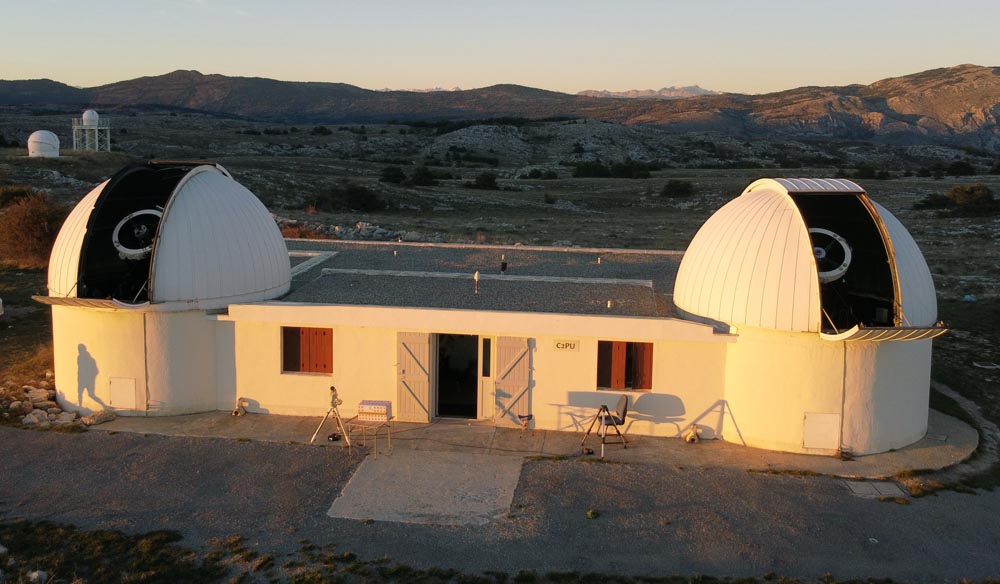
The whoppshel on a 1m telescope
The Calern plateau, near Nice, is a site of the Observatoire de la Côte d’Azur, which is home to, among other things, the C2PU (Centre Pédagogique Planète et Univers)
with 2 twin 1m-diameter telescopes.
Every year since 2017, with the 2SPOT team, I’ve had the opportunity to carry out spectroscopic observation missions on low-resolution faint targets on one of the two telescopes. This year, we were able to use the two 1m telescopes and set up an Echelle Whoppshel spectrograph with a nominal resolution of R=30,000 (between 22,000 and 32,000 depending on the order) for 5 nights, thus testing its full potential, as this spectrograph is dedicated to telescopes in the 1m to 1.5m diameter class, whereas at home, it’s used on a 0.4m telescope.
The 1m telescopes at C2PU
Both are Cassegrain-type telescopes, open at f/12.5 and 1.04m in diameter. They are mounted on an English-style equatorial fork.
The two telescopes are named Epsilon for the one in the east-side dome, and Omicron for the one in the west-side dome.
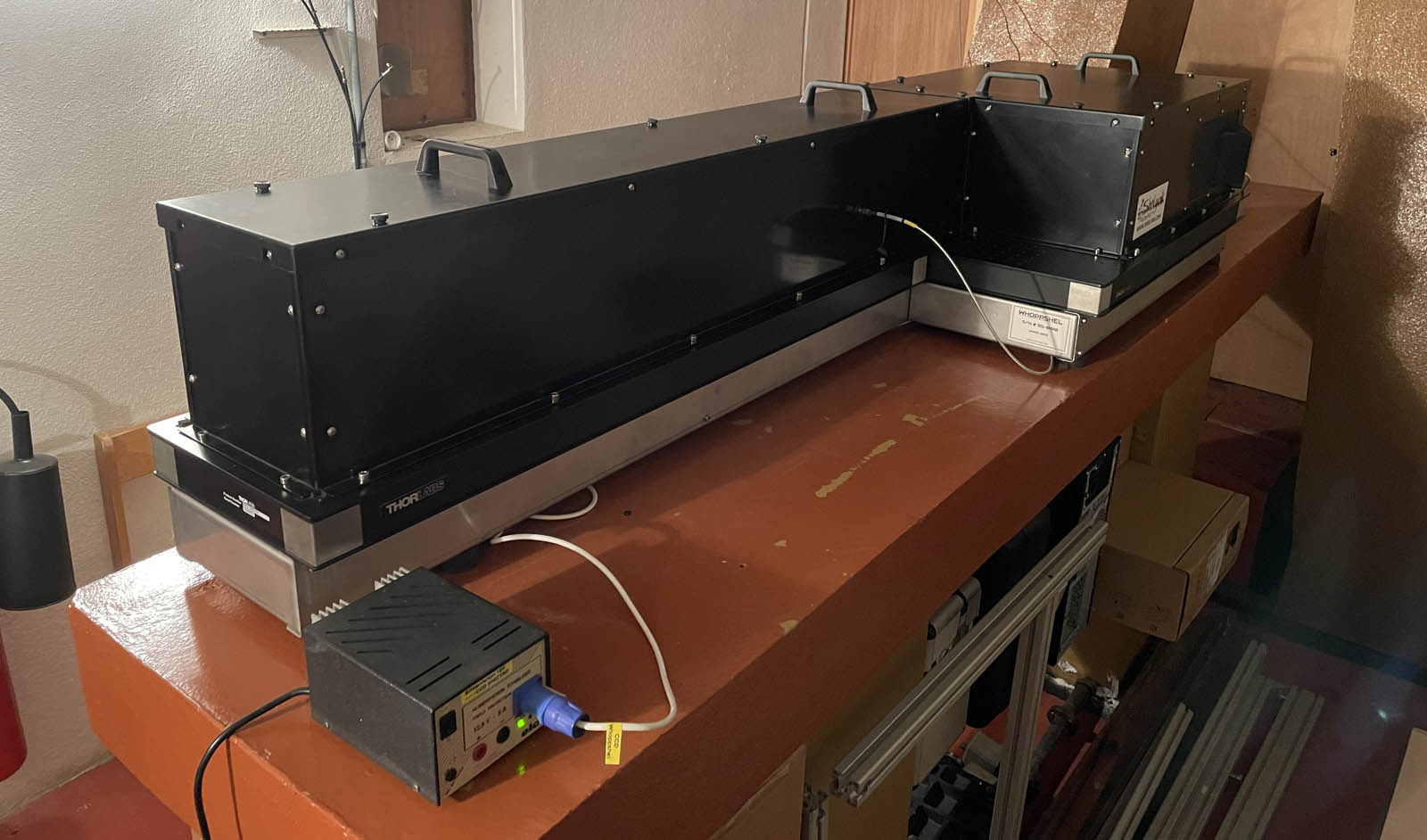
We install the whoppshel on the Omicron telescope with 2 focal reducers bringing the native focal length down to f/6, necessary to inject the flux into the fiber of the spectrograph’s close-up lens. Admittedly, some flux is lost, especially in the blue end of the spectrum (with several lenses in the telescope’s optical path cutting off part of the UV flux in the spectrum), but the use of such reducers is essential for good Whoppshel performance. It would be preferable, however, to use the whoppshel on a telescope with a f/d ratio close to 6 natively (with the dedicated injection fiber module), so as not to cut off the blue and near-UV flux. The injection fiber module is fitted with an ATIK 314L+ camera for autoguiding the target over the 50µm hole in the optical fiber.
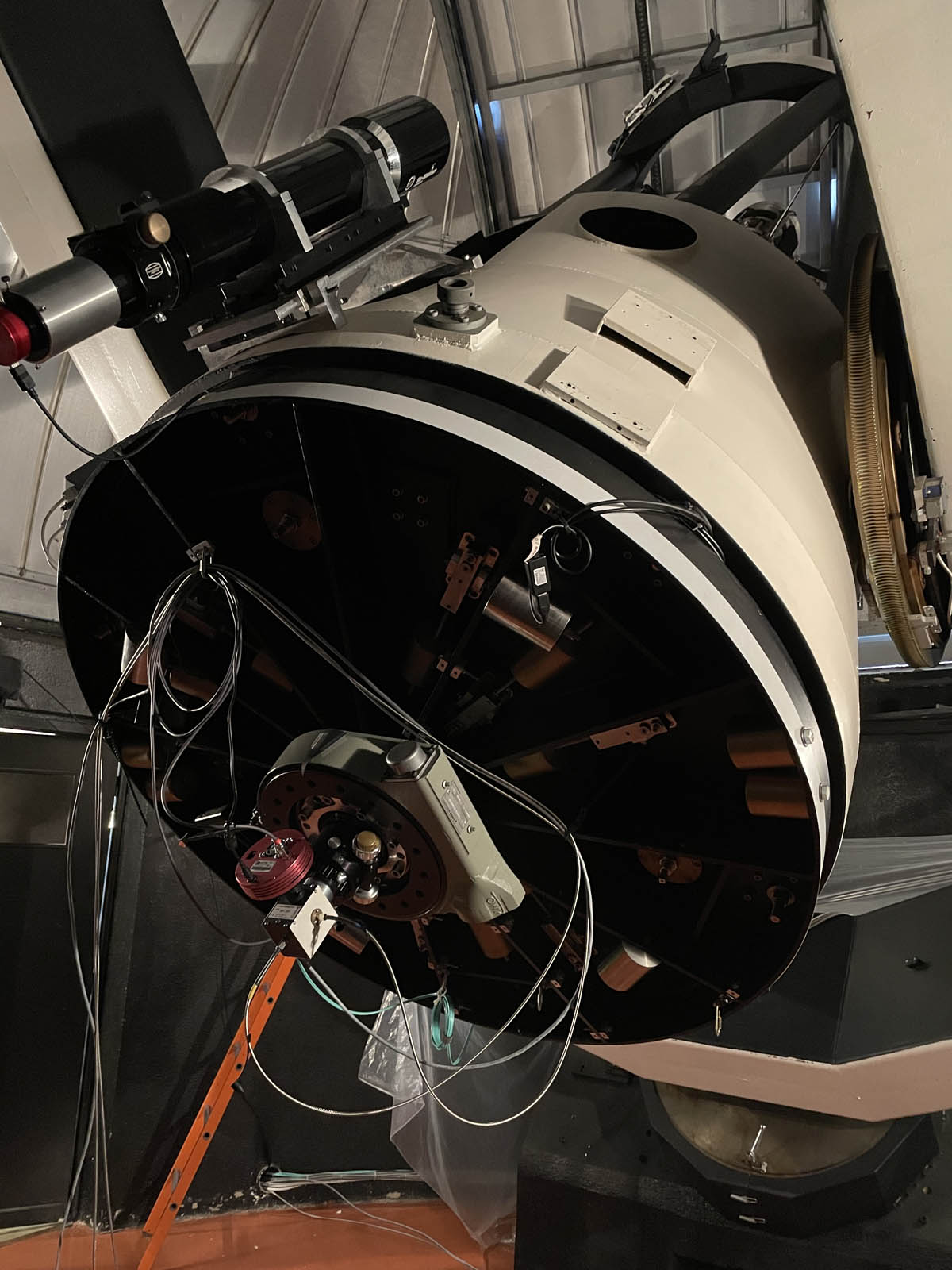
Assembling the Whoppshel spectrograph
We dismantled the whoopshel from its original location on a 400mm diameter telescope at home, transported it to the Calern observatory site and reassembled it in a room just behind the Omicron telescope, on a stable concrete table isolated from the rest of the building to avoid any vibrations that might interfere with spectrum production. The spectrograph’s 81 kg mass requires a rigid, stable support.
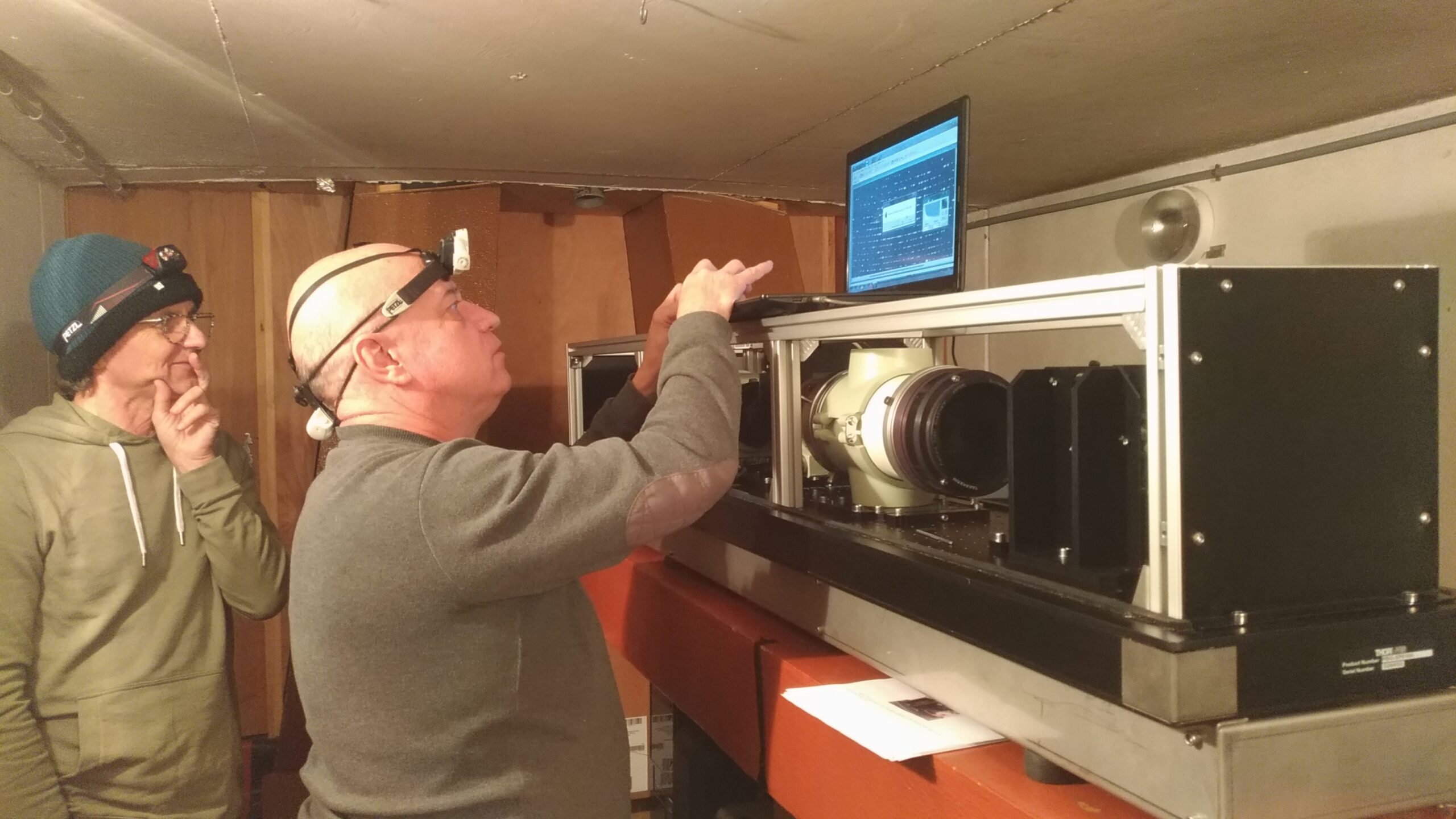
It takes 4 to 5 hours to reassemble/adjust everything. The task was simplified by the use of shims prepositioned on the optical bench to position the various modules making up the spectrograph at precise points. The various modules are assembled in the same order as the flow of light through the spectrograph (from the fiber inlet to the spectral camera). At each stage of the assembly, each optical element is focused to obtain the lowest possible FWHM (of the order of 4 pixels with an ATIK 460Ex camera in 1×1 bin and 4.54 µm pixels).
At the end of the set-up, we check that we’ve obtained a echelle spectrum covering the entire camera sensor, and optimize the focus by taking a line from the Thorium/Argon lamp emitting a middle order (order #58, for example) and adjusting the sharpness to obtain the finest possible line. The image on the right shows a spectrum of the Thorium/Argon calibration lamp: 10s exposure in bin 1×1 with an ATIK 460Ex.
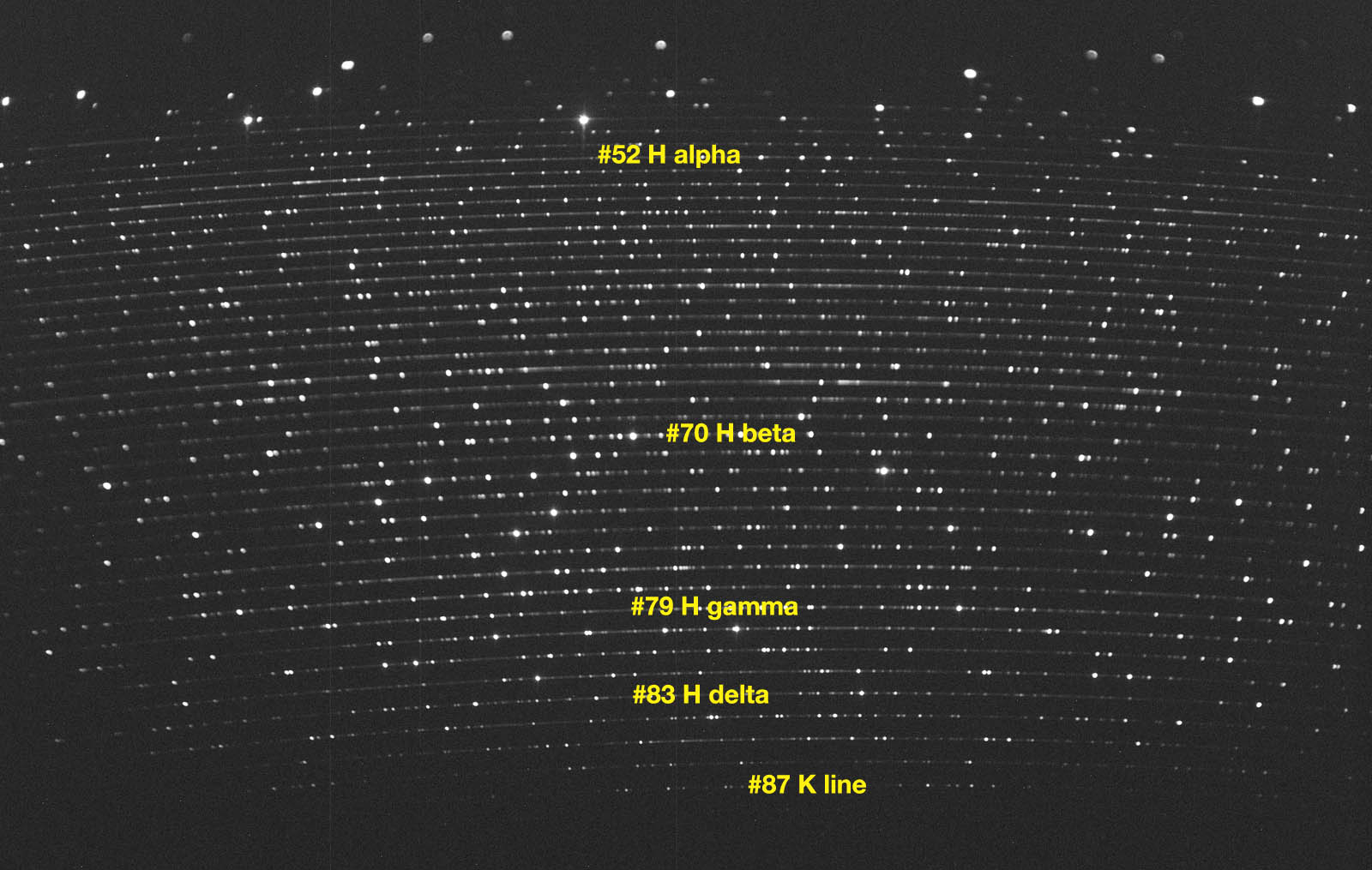
Tests on various targets
During our mission at C2PU, we only had 2 usable nights out of the 5 available. We were able to make a dozen stellar targets with magnitudes ranging from 0 to 13.
First of all, in order to achieve a generic instrumental response at a median pitch, we made the Vega spectrum (mag. V=0.03), with unit exposures of 20s so as not to saturate the spectrum. (approx. 40,000 ADU for each individual exposure). The graph opposite shows the profile of the first 5 Balmer lines (21 exposures of 20s each).
All acquisitions are made from the Omicron telescope control room, where telescope pointing, acquisitions and calibration lamps are simultaneously controlled.
We were able to make spectra of Be stars such as HD 13669 (mag. V=7.90), HD 21455 (mag. V=6.22), V442 And (mag. V=6.82) and HD 18552 (mag. V=6.12). These spectra have been deposited in the Bess database
Moving up into the lower magnitudes, here’s the spectrum of the symbiotic star AX Per (mag. V=10.42 at the time of acquisition).
Once again, the unit exposure time was adapted to the nature of the target, so as not to saturate the spectrum. The H Alpha line remains fairly intense on this spectrum too, and we used a unit exposure time of 600s. Right, spectrum of AX Per (12 exposures of 600s).
The resolution of the spectrum shows perfectly the splitting of the Sodium D1 and D2 lines between the star’s lines and the atmospheric lines.
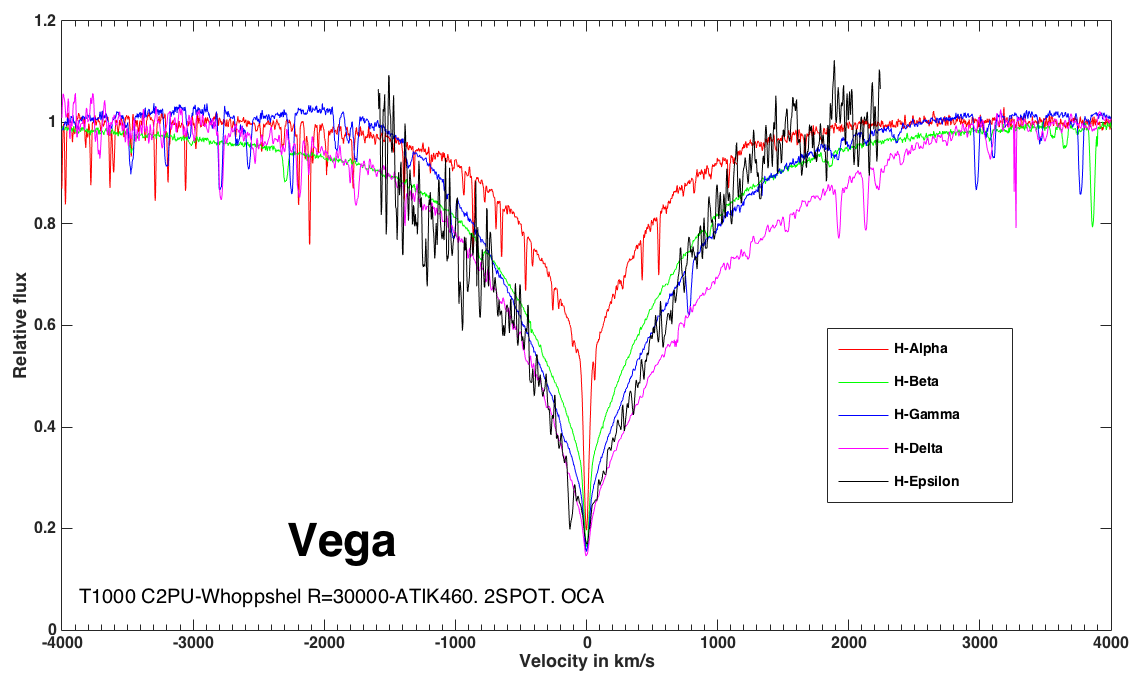
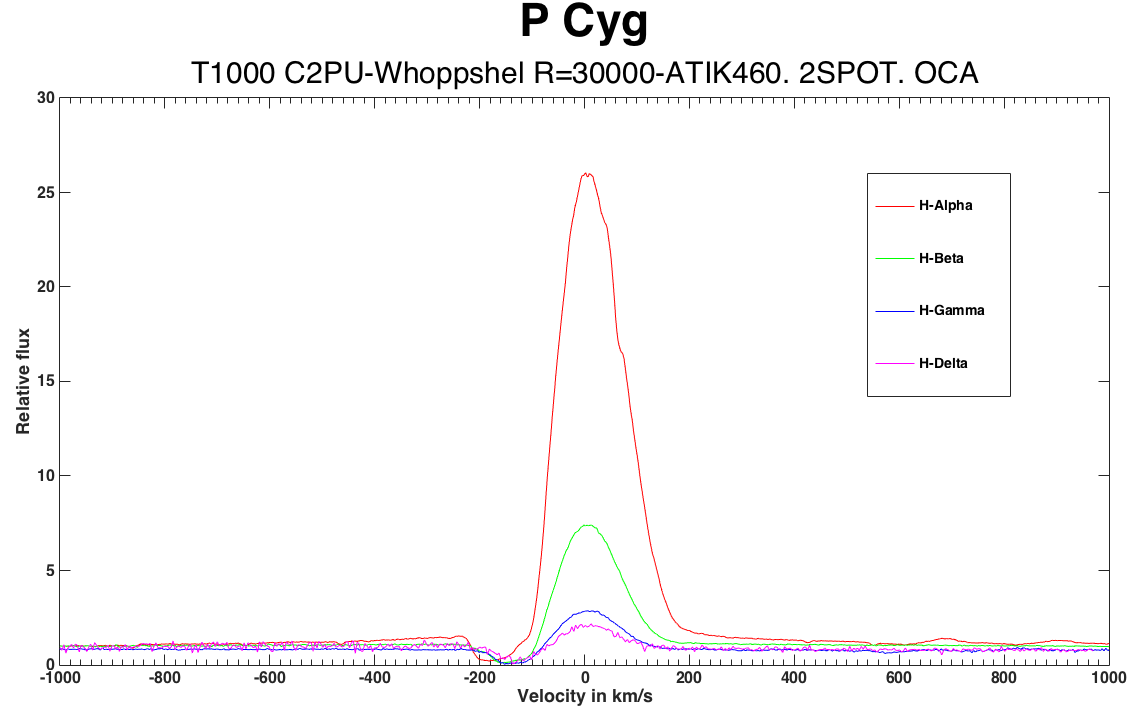
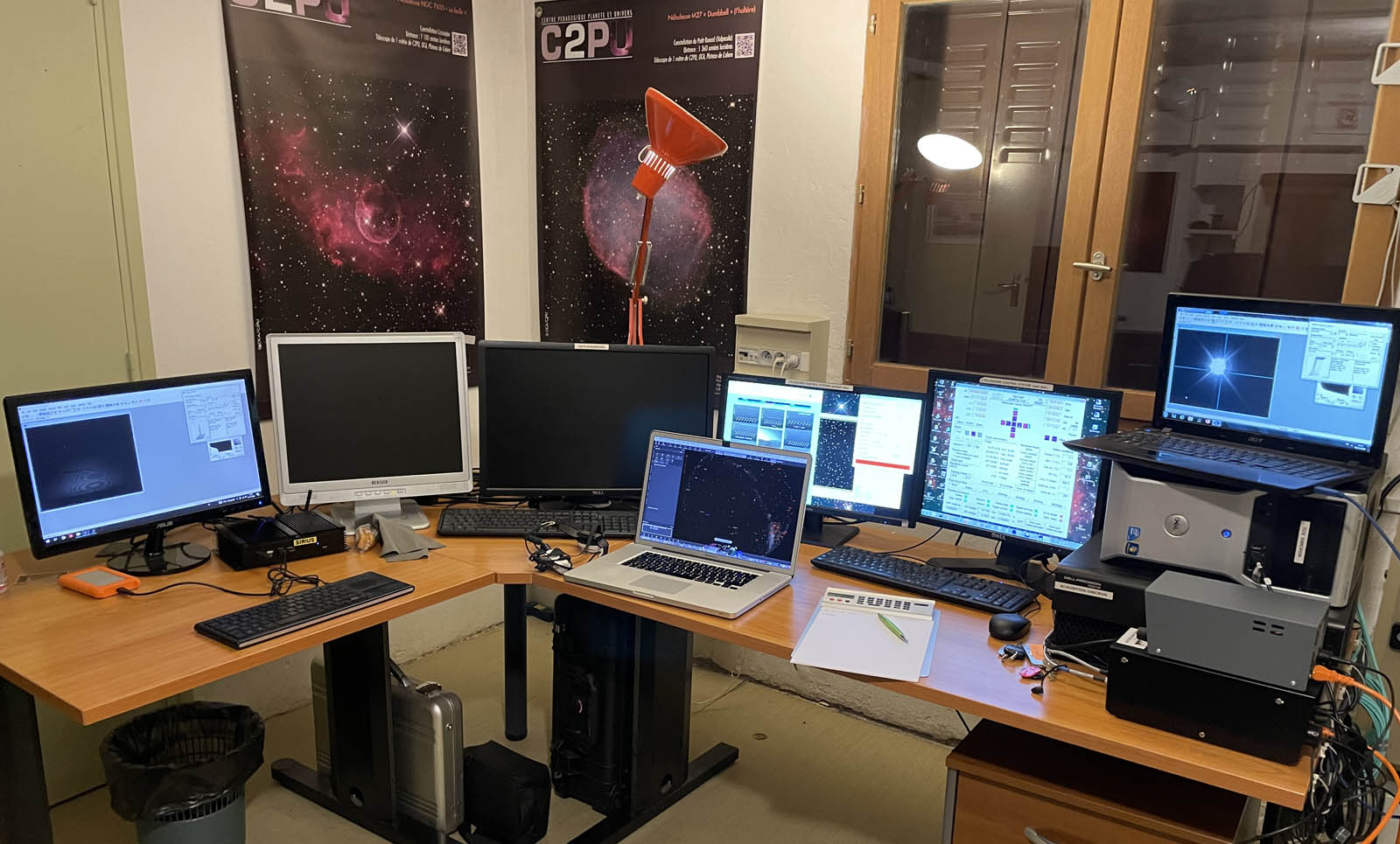
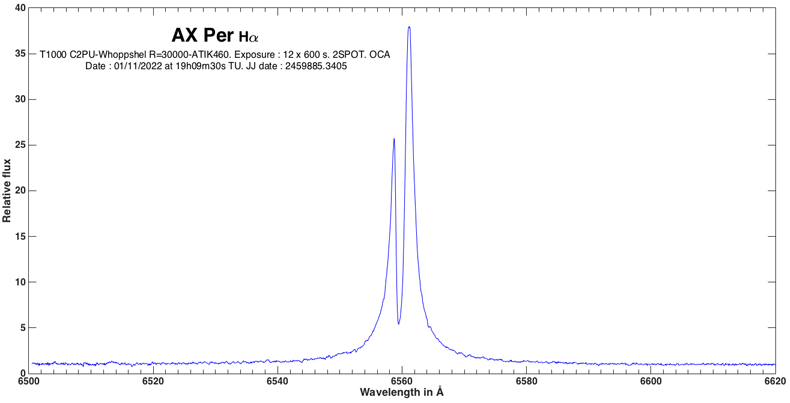
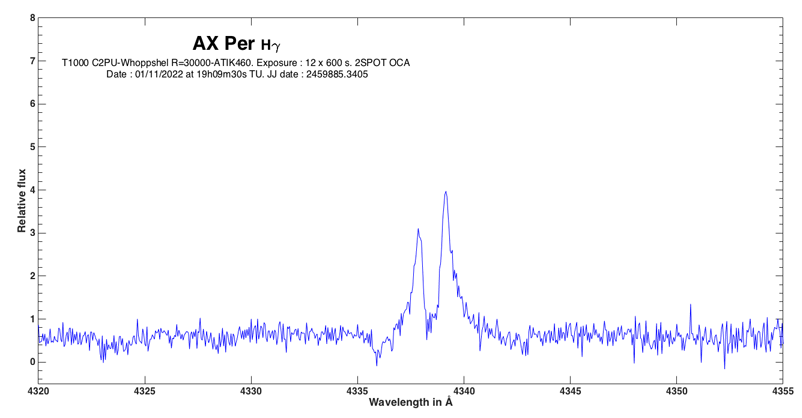
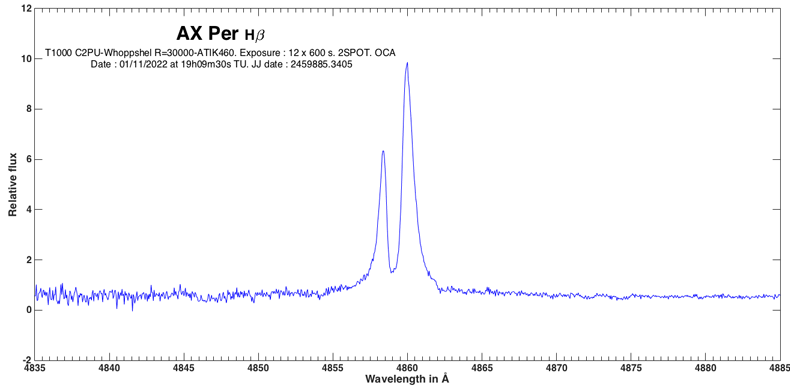
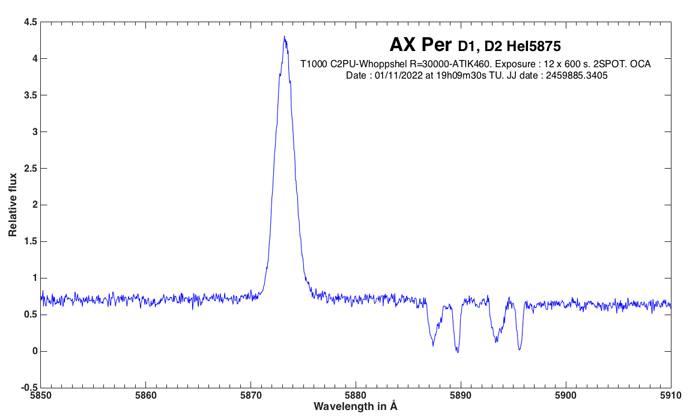
Conclusion
We were able to make a dozen or so very different targets and even tried out a target at magnitude V=13.10 (MV Cyg), but without much success, as the spectrum was drowned in noise. From the spectra we’ve produced, we can estimate that the limiting magnitude that can be reached with the Whoppshel spectrograph with a 1m telescope open at f/6 is magnitude V=11 with a snr close to 100 on order #58 if we set it for 3 hours.
This magnitude limit is of course highly dependent on the observation site, the quality of the mount’s tracking on the target, its centering on the fiber and the total number of exposures. On AX Per, the resulting total exposure is 2 hours (12 exposures of 600s).
